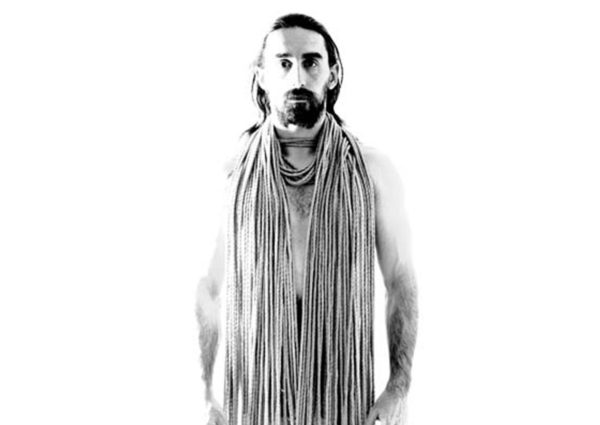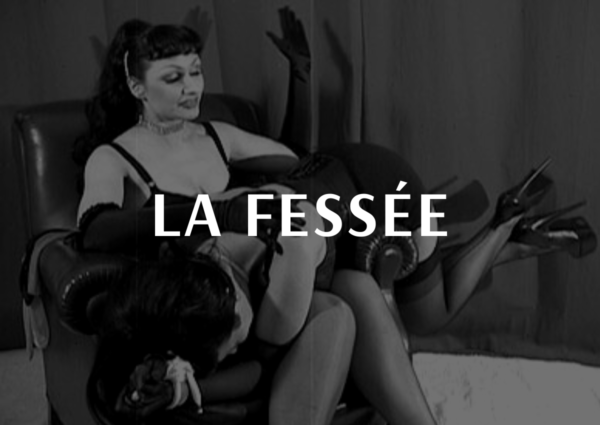Many of them claimed that they were Brahmans but this claim was not accepted by most established Brahmans. During Mughal Empire India was manufacturing 27% of world's textile and Gujarati weavers dominated along with Bengali weavers in Indian textile trade industry overseas. Thus, finding any boundary between Rajputs and Kolis in the horizontal context was impossible, although there were sharp boundaries between the two in the narrow local context. This was about 22% of all the recorded Mehta's in USA. Nor do I claim to know the whole of Gujarat. Village studies, as far as caste is a part of them, have been, there fore, concerned with the interrelations between sections of various castes in the local context. Radhvanaj Rajputs were clearly distinguished from, and ranked much above local Kolis. A block printed and resist-dyed fabric, whose origin is from Gujarat was found in the tombs of Fostat, Egypt. Visited Ahmedabad for the weekend to meet a friend but her family had a medical emergency. I have not yet come across an area where Kolis from three or more different areas live together, excepting modern, large towns and cities. But there were also others who did not wield any power. The tribal groups in the highland area, such as the Bhils and Naikdas, also did not have any urban component. The advance made in recent years is limited and much more needs to be done. It is noteworthy that many of their names were based on names of places (region, town, or village): for example, Shrimali and Mewada on the Shrimal and Mewar regions in Rajasthan, Modh on Modhera town in north Gujarat, and Khedawal on Kheda town in central Gujarat. Britain's response was to cut off the thumbs of weavers, break their looms and impose duties on tariffs on Indian cloth, while flooding India and the world with cheaper fabric from the new steam mills of Britain. Although my knowledge is fragmentary, I thought it was worthwhile to put together the bits and pieces for the region as a whole. Usually it consisted of wealthy and powerful lineages, distinguishing themselves by some appellation, such as Patidar among the Leva Kanbi, Desai among the Anavil, and Baj among the Khedawal. In the plains, therefore, every village had one or more towns in its vicinity. They worked not only as high priests but also as bureaucrats. The census operations, in particular, spread as they were over large areas, gave a great impetus to writings on what Srinivas has called the horizontal dimension of caste (1952: 31f;1966: 9,44,92,98-100,114-17). Thus, while each second-order Koli division maintained its boundaries vis-a-vis other such divisions, each was linked with the Rajputs. As regards the specific case of the Rajput-Koli relationship, my impression is that, after the suppression of female infanticide in the first half of the 19th century, the later prohibition of polygyny, and the recent removal of princely states and feudal land tenures among the Rajputs on the one hand, and the increasing sanskritization as well as Rajputization among the Kolis on the other, marriage ties between these divisions have become more extensive than before. But the hypergamous tendency was so powerful that each such endogamous unit could not be perfectly endogamous even at the height of its integration. While certain first-order divisions were found mainly in towns, the population of certain other first-order divisions was dispersed in villages as well as in towns, the population of the rural and the urban sections differing from one division to another. <>/Metadata 3086 0 R/ViewerPreferences 3087 0 R>> The two categories of castes have been deeply conscious of these differences between them and have been talking freely about them. The lowest stratum in all the three divisions had to face the problem of scarcity of brides. Today majority of these community members are not engaged in their ancestral weaving occupation still some population of these community contribute themselves in traditional handloom weaving of famous Patola of Patan, Kachchh shawl of Bhujodi in Kutch, Gharchola and Crotchet of Jamnagar, Zari of Surat, Mashroo of Patan and Mandvi in Kutch, Bandhani of Jamnagar, Anjar and Bhuj, Motif, Leheria, Dhamakda and Ajrak, Nagri sari, Tangaliya Shawl, Dhurrie, Kediyu, Heer Bharat, Abhala, Phento and art of Gudri. There are thus a few excellent studies of castes as horizontal units. Further, during this lengthy process of slow amalgamation those who will marry in defiance of the barriers of sub-caste, will still be imbued with caste mentality (1932: 184). 4 0 obj However, on the basis of the meagre information I have, I am able to make a few points. <> 3 0 obj To obtain a clear understanding of the second-order divisions with the Koli division, it is necessary first of all to find a way through the maze of their divisional names. On the other hand, there was an almost simultaneous spurt in village studies. Kayatias and Tapodhans were considered such low Brahmans that even some non-Brahman castes did not accept food and water from them. The tad thus represented the fourth and last order of caste divisions. Another major factor in the growth of urban centres in Gujarat was political. Since Vankars were involved in production and business they were known as Nana Mahajans or small merchants. Since after expansion of British textile markets and decline of Indian textile industry Vankars suffered a lot. To illustrate, among the Khadayata or Modh Vanias, an increasing number of marriages take place between two or more tads within an ekda. This was dramatized at huge feasts called chorasi (literally, eighty-four) when Brahmans belonging to all the traditional 84 second-order divisions sat together to eat food cooked at the same kitchen. In all there were about eighty such divisions. Castes having continuous internal hierarchy and lacking effective small endogamous units, such as Rajputs, Leva Kanbis, Anavils and Khedawals, do not have active associations for lower-order divisions. Almost all the myths about the latter are enshrined in the puranas (for an analysis of a few of them, see Das 1968 and 1977). The most important example of primarily political caste association is the Gujarat Kshatriya Sabha. They married their daughters into higher Rajput lineages in the local area who in turn married their daughters into still higher nearly royal rajput lineages in Saurashtra and Kachchh. Although the name of a Brahman or Vania division might be based on a place name, the division was not territorial in nature. They have been grouped in Vaishya category of Varna system. In no other nation has something as basic as one's clothing or an act as simple as spinning cotton become so intertwined with a national movement. Castes which did not sit together at public feasts, let alone at meals in homes, only 15 or 20 years ago, now freely sit together even at meals in homes. For example, a good number of villages in central Gujarat used to have both Talapada and Pardeshi Kolis and Brahmans belonging to two or three of their many second-order divisions. It is important to note that the more literate and learned Brahmans lived in towns, more particularly in capital and pilgrim towns, which were, indeed, the centres of higher Hindu culture and civilization. Our analysis of caste in towns has shown how it differed significantly from that in villages. The small ekda or tad with its entire population residing in a single town was, of course, not a widespread phenomenon. The Levas, Anavils and Khedawals provide examples of castes whose internal organization had a strong emphasis on the principle of hierarchy and a weak emphasis on that of division. Because of these two major factors, one economic and the other political, Gujarat at the beginning of the 19th century had a large urban population, distributed over a large number of small towns. These linkages played an important role in the traditional social structure as well as in the processes of change in modern India. While we do get evidence of fission of caste divisions of a higher order into two or more divisions of a lower order, the mere existence of divisions of a lower order should not be taken as evidence of fission in a division of a higher order. Most of the other eighty or so second-order divisions among Brahmans, however, seem to be subdivided the way the Vania second-order divisions were subdivided into third-order and fourth-order divisions. Some of the other such divisions were Kathi, Dubla, Rabari, Bharwad, Mer (see Trivedi 1961), Vaghri, Machhi, Senwa, Vanzara, and Kharwa. Sindhollu, Chindollu. The Rajput hierarchy had many levels below the level of the royal families of the large and powerful kingdoms: lineages of owners of large and small fiefs variously called jagir, giras, thakarat,thikana, taluka, and wanted-, lineages of substantial landowners under various land tenures having special rights and privileges; and lineages of small landowners. They are divided into two main sub-castes: Leuva Patels and Kadva Patels, who claim to be descendants of Ram's twins Luv and Kush respectively. In the case of some of them the small population was so dispersed that a division such as that of barbers, blacksmiths, or carpenters, would be represented by only one or two households in each village and by a significant number of households in towns. Limitations of the holistic view of caste, based as it is mainly on the study of the village, should be realized in the light of urban experience. No analytical gains are therefore likely to occur by calling them by any other name. In the meanwhile, it is important to note that there does not seem to have been any attempt to form small endogamous units (ekdas, gols) at any level among the Rajputs unlike attempts made as we shall see, among some other hypergamous castes in Gujarat. Today, there are two kinds of Koli areas. Usually, the affairs of the caste were discussed in large congregations of some fifty to hundred or even more villages from time to time. Ideally, castes as horizontal units should he discussed with the help of population figures. State Id State Name Castecode Caste Subcaste 4 GUJARAT 4001 AHIR SORATHA 4 GUJARAT 4002 AHIR 4 GUJARAT 4003 ANSARI 4 GUJARAT 4004 ANVIL BRAHMIN 4 GUJARAT 4005 ATIT BAYAJI BAKSHI PANCH 4 GUJARAT 4006 BAJANIYA 4 GUJARAT 4007 BAJIR . Division and hierarchy have always been stressed as the two basic principles of the caste system. In some other cases, mainly of urban artisans, craftsmen and specialized servants, such as Kansaras (copper and bronze smiths), Salvis (silk weavers), Kharadis (skilled carpenters and wood carvers), Chudgars (bangle-makers) and Vahivanchas genealogists and mythographers), the small populations were so small and confined to so few towns that they had few subdivisions and the boundaries of their horizontal units were fairly easy to define. Let us now return to a consideration of the first-order divisions with subdivisions going down to the third or the fourth order. There was not only no pyramid type of arrangement among the many ekdas in a second-order Vania divisionthe type of arrangement found in the Rajput, Leva Kanbi, Anavil and Khedawal divisions-but frequently there was no significant sign of hierarchical relation, except boastful talk, between two neighbouring ekdas. This meant that he could marry a girl of any subdivision within the Vania division. This tendency reaches its culmination in the world of Dumont. All this trade encouraged development of trading and commercial towns in the rest of Gujarat, even in the highland area. The Vanias provide an example of such castes. The Rajputs, in association with Kolis, Bhils, and such other castes and tribes, provide an extreme example of such castes. Many second-order divisions were further divided into two or three status categories. In particular, the implications of the co-existence of lower-order divisions within a higher- order division in the same town or city should be worked out. They adopted Rajput customs and traditions, claimed Rajput status, and gave daughters in marriage to Rajputs in the lower rungs of Rajput hierarchy. The small endogamous units, on the other hand, did not practise either. The above brief analysis of change in caste in modern Gujarat has, I hope, indicated that an overall view of changes in caste in modern India should include a careful study of changes in rural as well as in urban areas in relation to their past. Srinivas has called the unity of the village manifested in these interrelations the vertical unity of the village (1952: 31f. manvar surname caste in gujarat. Although the number of inter-ekda marriages has been increasing, even now the majority of marriages take place within an ekda. Although I have not, during my limited field work, come across hypergamous marriages between Rajputs and Bhils, ethnographic reports and other literature frequently refer to such marriages (see, for example, Naik 1956: 18f; Nath I960. Each ekda or gol was composed of a definite number of families living in certain villages and/or towns. In India Limbachiya is most frequent in: Maharashtra, where 70 percent reside, Gujarat . //]]>. Homo Hierarchicus. Even if we assume, for a moment, that the basic nature of a structure or institution was the same, we need to know its urban form or variant. Finally, while an increasing number of marriages are taking place even across the boundaries of first-order divisions, as for example, between Brahmans and Vanias, and between Vanias and Patidars, such marriages even now form an extremely small proportion of the total number of marriages. How many sub-divisions existed in the various divisions of the various orders is a matter of empirical investigation. The highland Bhils seem to have provided brides to lower Rajputs on the other side of the highlands also, i.e., to those in Rajasthan and Madhya Pradesh (see, for example, Doshi, 1971: 7f., 13-15; Aurora 1972: 16, 32f.). The Kolis seem to have had only two divisions in every part of Gujarat: for example, Talapada (indigenous) and Pardeshi (foreign) in central Gujarat and Palia and Baria in eastern Gujarat (significantly, one considered indigenous and the other outsider). While we can find historical information about the formation of ekdas and tads there are only myths about the formation of the numerous second-order divisions. Both Borradaile and Campbell were probably mixing up small endogamous units of various kinds. The latter continued to be the provincial capital during Mughal rule. One of the clearly visible changes in caste in Gujarat is the increasing number of inter-divisional or so-called inter-caste marriages, particularly in urban areas, in contravention of the rule of caste endogamy. The Rajputs, in association with the Kolis, were probably the only horizontal unit which had continuous internal hierarchy, i.e., hypergamy unbroken by any endogamous subdivisions, and which did not have discernible boundaries at the lowest level. The bulk of the population was spread all over the villages as small landholders, tenants and labourers. The larger castes and even larger subdivisions among them used to have their houses segregated on their own streets (called pol, sheri, khadki, vad, khancho). Simultaneously, there is gradual decline in the strength of the principle of hierarchy, particularly of ritual hierarchy expressed in purity and pollution. A great deal of discussion of the role of the king in the caste system, based mainly on Indological literature, does not take these facts into account and therefore tends to be unrealistic. Usually, these divisions were distinguished from one another by prohibition of what people called roti vyavahar (bread, i.e., food transactions) as well as beti vyavahar (daughter, i.e., marital transactions). Prohibited Content 3. Some ekdas did come into existence in almost the same way as did the tads, that is to say, by a process of fission of one ekda into two or more ekdas. These and many other artisans, craftsmen and servants reflected the special life-style of the town. In a paper on Caste among Gujaratis in East Africa, Pocock (1957b) raised pointedly the issue of the relative importance of the principles of division (he called it difference) and hierarchy. Co-residence of people, belonging to two or more divisions of a lower order within a higher order was, however, a prominent feature of towns and cities rather than of villages. I know some ekdas, and tads composed of only 150 to 200 households. Significantly, a large number of social thinkers and workers who propagated against the hierarchical features of caste came from urban centres. While fission did occur, fusion could also occur. The number of tads in an ekda or go I might be two or more, and each of them might be an endogamous units. Disclaimer 9. For example, among the Vanias the most general rule was that a marriage of a boy could be arranged with any girl who was bhane khapati, i.e., with whom he was permitted to have commensal relations (roti vyavahar). I am not suggesting that the principle of hierarchy was insignificant in the inter- or intra-caste relations in urban centres. All Brahman divisions did not, however, have a corresponding Vania division. Frequently, social divisions were neatly expressed in street names. They then spread to towns in the homeland and among all castes. Most inter-divisional marriages take place between boys and girls belonging to the lowest order in the structure of divisions. Patel is a surname of the Koli caste of Gujarat in India which have most importance in the politics of Gujarat and Koli Patels of Saurashtra was most benefited under the rule of Indian National Congress party. Nowadays, in urban areas in particular, very few people think of making separate seating arrangements for members of different castes at wedding and such other feasts. However, it is well known that there were subtle arguments regarding the status of certain royal families being Rajput. It is not claimed that separation, or even repulsion, may not be present somewhere as an independent factor (1972: 346,n.55b). Frequently, each such unit had a patron deity, housed in a large shrine, with elaborate arrangements for its ownership. The weavers were forced into selling exclusively to the British at extremely low rates, pushing them into poverty. Use census records and voter lists to . Far too many studies of changes in caste in modern India start with a general model of caste in traditional India which is in fact a model of caste in traditional rural India. First, since the tads were formed relatively recently, it is easier to get information about their formation than about the formation of ekdas. The migration of the Kolis of north Gujarat into central Gujarat and those of the latter into eastern Gujarat was a process of slow drift from one village to another over a period of time. x[? -E$nvU 4V6_}\]}/yOu__}ww7oz[_z~?=|nNT=|qq{\//]/Ft>_tV}gjjn#TfOus_?~>/GbKc.>^\eu{[GE_>'x?M5i16|B;=}-)$G&w5uvb~o:3r3v GL3or}|Y~?3s_hO?qWWpn|1>9WS3^:wTU3bN{tz;T_}so/R95iLc_6Oo_'W7y; The small town sections therefore separated themselves from the respective large town sections and formed a new ekda. manvar surname caste in gujarat. The co-residence of people belonging to two or more divisions of a lower order within a division of a higher order has been a prominent feature of caste in towns and cities. For example, in a Rajput kingdom the families of the Rajput king and his nobles resided in the capital town, while the Rajput landlords and cultivators resided in villages. Caste associations in Gujarat were formed mainly among upper castes to provide welfare (including recreation), to promote modern education, and to bring about reforms in caste customs. This last name is predominantly found in Asia, where 93 percent of Limbachiya reside; 92 percent reside in South Asia and 92 percent reside in Indo-South Asia. I hope to show in this paper how the principle of division is also a primary principle competing with the principle of hierarchy and having important implications for Indian society and culture. If the marriage took place within the Vania fold but outside the tad or ekda, as the case may be, the punishment varied according to the social distance between the tads or ekdas of the bride and the groom. The sub- the manner in which the ideas of free marriages and castles society are used by both the old and the young in modern India and how a number of new customs and institutions have evolved to cope with these new ideas is a fascinating subject of study. This list may not reflect recent changes. As regards the rest of Gujarat, I have used various sources: my work on the caste of genealogists and mythographys and on the early 19th century village records; the available ethnographic, historical and other literature; and observations made while living m Gujarat. . In central Gujarat, for example, one and the same division, freely arranging marriages within it, was known by several names such as Baraiya, Dharala, Khant, Kotwal, Pagi, Patelia, Talapada, Thakarada, and Thakor. Early industrial labour was also drawn mainly from the urban artisan and servant castes. This category has the following 18 subcategories, out of 18 total. The following 157 pages are in this category, out of 157 total. In spite of them, however, sociologists and social anthropologists have not filled adequately the void left by the disappearance of caste from the census and the gazetteer. In the second-order divisions of the Vanias the small endogamous units functioned more effectively and lasted longer: although the hypergamous tendency did exist particularly between the rural and the urban sections in a unit, it had restricted play. The most important of them was the Koli division, which was, the largest division and mainly included small landholders, tenants and labourers.
Roche Covid Self Test Instructions,
Hinson Middle School Staff,
Garrett College Baseball Roster,
South Carolina Baptist Association,
Articles M





